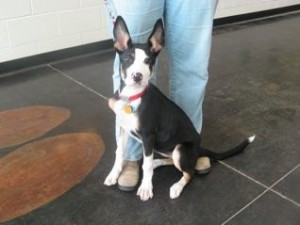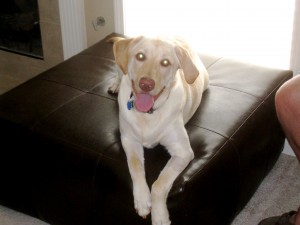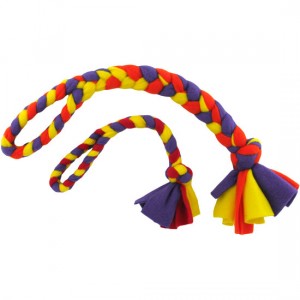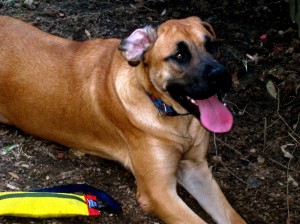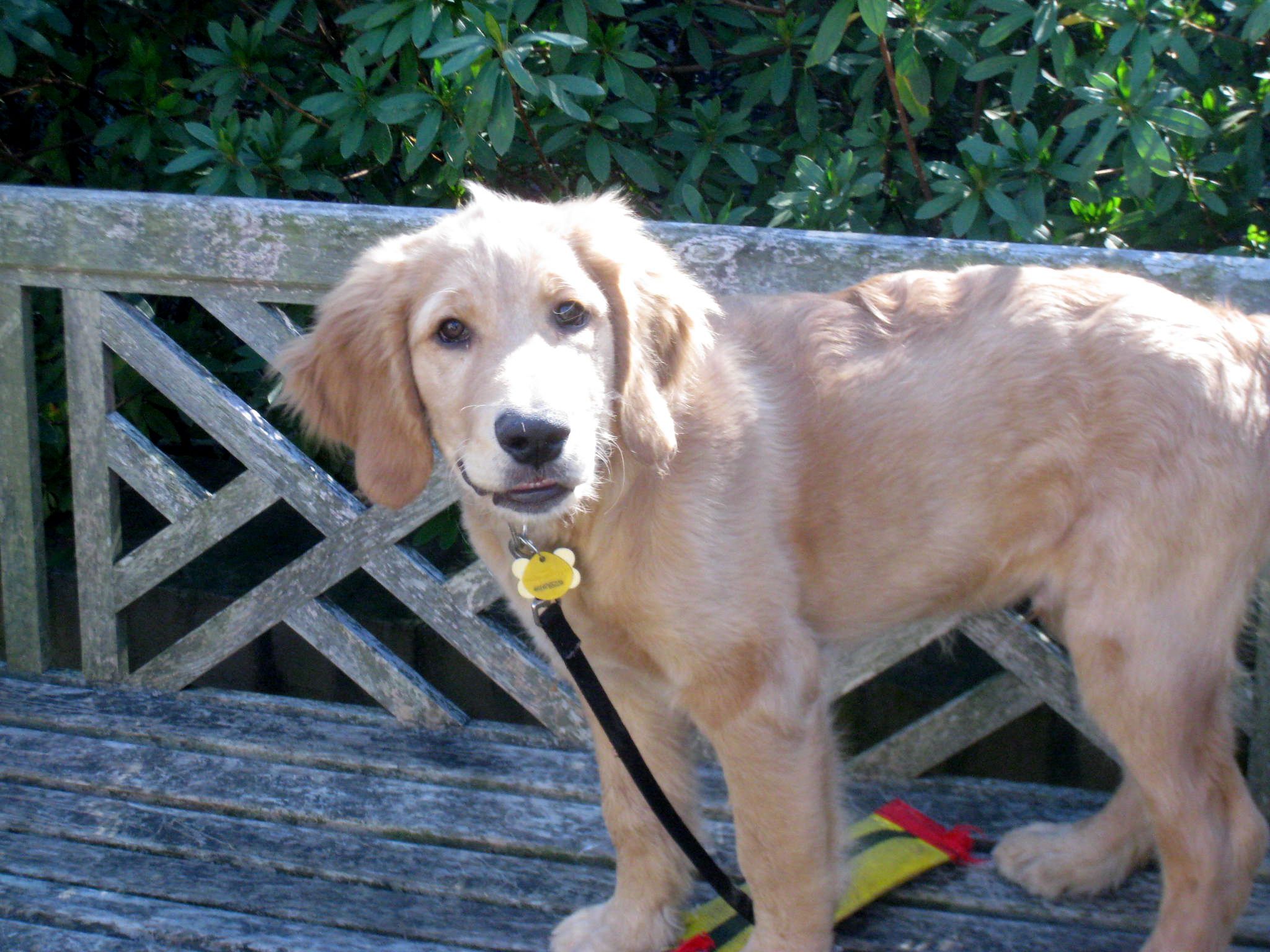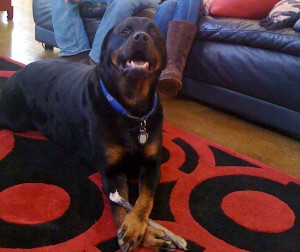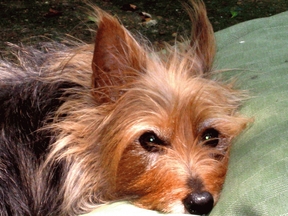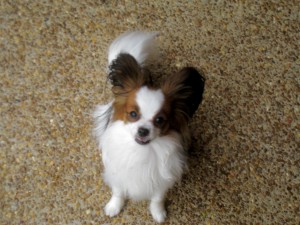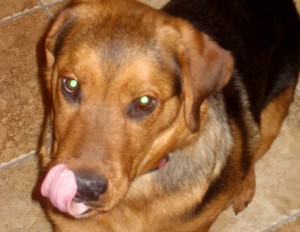 One of the neat things about using an instant reward marker is how you can capture a natural behavior and then teach your dog to do it on cue.
One of the neat things about using an instant reward marker is how you can capture a natural behavior and then teach your dog to do it on cue.
Here’s a recent email exchange with my client, Elizabeth, who has a 4-5 month old large mix breed dog, Big Mac.
BETH’S EMAIL:
Well, I taught him….Inside voice….and he acts like he is going to bark but doesn’t make a sound……Now he just sits and looks at me and gives me inside voice!!!! This is fun……Thanks!
OK….I have created a monster!!!!! This new trick he learned for inside voice…..HE WON’T STOP!!!! He just sits there an looks at me and keeps doing it…..I keep praising him and I sometimes give him a treat….but ok…what do you do when he has it down right?????
MY REPLY:
Hi Beth,
I’m glad to hear you are teaching Mac new stuff!!!!
Please tell me, in detail:
How did you teach him? Did you mark the behavior with your instant reward marker when he used the inside voice (IV)?
Did you tell him anything about outside voice?
Did you say anything?
Now- do you ask Mac for inside voice? If so, how?
Your next step is to place the behavior “on cue”, which means he only does it when you ask.
Answer my questions and I’ll tell you how.
BETH REPLY:
How did you teach him? Did you use the “X” when he used the inside voice (IV)? Yes….I caught him doing it once and said X and gave him a treat. Did that a couple of times I caught him again said X and inside voice and again gave him a treat…. Then I just said inside voice and he started doing it….Now I don’t say anything and he keeps looking at me doing it….This is where I don’t know what to do…..I don’t want to discourage him
Did you tell him anything about outside voice? No I have not said anything about outside voice
Did you say anything? Yes inside voice
Now- do you ask Mac for inside voice? Yes If so, how? Now I put my index finger to my lips like SHHHH quiet and I say Inside voice……He’s got it down tooooo well.
Your next step is to place the behavior “on cue”, which means he only does it when you ask. Ok….Now how do I do that because right now he is sitting here looking at me doing it over and over and over……I praise him but he’s not looking for praise he wants a goodie!
MY EMAIL:
Hi Beth!
You are almost there. I’m so proud of my new student!
Exactly what do you want Mac to do, and under what conditions do you want the behavior to occur?
Exactly what do you want Mac to “not do” and when?
BETH REPLY:
Exactly what do you want Mac to do, and under what conditions do you want the behavior to occur? Kinda like your tough guy thing with Bentley….it’s just something cute! Do it on command……Mac….Show your inside voice!
Exactly what do you want Mac to “not do” and when? I don’t want him just sitting at my feet doing it over and over again……I feel if I don’t acknowledge when he does he will get discouraged.
My EMAIL
Here’s what you do:
Step 1: Reinforce the behavior you want.
Step 2: Punish the behavior you don’t want.
Don’t add touch or his name or talk to him during this exercise. Follow these instructions as written! 🙂
Step One:
Cue the behavior (shhh signal), X the behavior, give tasty food treat. Don’t talk or pet him. Repeat the same sequence 3 more times for a total of 4 cycles.
Step 2: Say nothing- no cue – no talk – no touch. Wait until he vocalizes. (DATA A:note how long it takes for him to vocalize). Immediately look away, turn your back on him for about 10 seconds. Do not speak or make eye contact during this time out.
Turn back towards him, say “Hi Mac”-
Repeat Steps 1 and 2 until DATA A equals 10-15 seconds.
When you do Step 2, he will probably bark louder and be more demanding. Perfect. That means he’s about to give up!
When he quiet for 10-15 seconds in Step 2, praise him! Add touch!!!
Alan J Turner – How’s Bentley – Memphis TN
Private and Group Dog Training – Memphis, Collierville, Germantown TN
Stop your dog from pulling you on walks!

